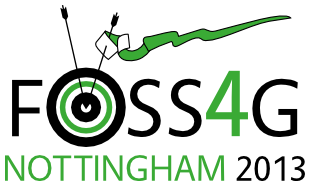Presentation
An API For Visualizing Data From The Sensor Web
Simon Jirka (52°North GmbH) with Henning Bredel (52°North GmbH), Jan Schulte (52°North GmbH)
15:00 on Friday 20th September (in Session 38, starting at 2 p.m., Banqueting Suite)
Show in Timetable
This presentation will show how observation data from the Sensor Web, i.e. provided through the standardized OGC Sensor Observation Service (SOS) interface, can be accessed and visualized through web-based clients. For this purpose, the open source 52°North Sensor Web Client API will be introduced. The 52°North Sensor Web client has been available for several years and provides a very broad range of features for displaying sensor data (i.e. time series data as graphs and tables). This is complemented by additional functionality for creating notification rules and for subscribing to according alerts (based on the OGC Sensor Event Service Discussion Paper). To achieve such functionality, any OGC SOS client needs to be able to gather the necessary metadata from SOS servers. This includes information such as the parameters, the sensors as well as the geographic features for which observations are available. Based on this metadata a client becomes able to display the available data sets and to allow the user a selection of the data he is interested in. The implementation of this metadata retrieval and analysis task is a fundamental step for every SOS client developer that requires good knowledge of the OGC SOS standard as well as a significant amount programming work. However, as this metadata retrieval functionality is a common element of basically all SOS client implementations, the decision was taken to isolate this functionality into a separate software module which can be re-used by any other SOS client. The same applies to the actual observation data retrieval. Also in this case client implementers would need to work with the SOS standard and often very large XML documents. Looking at lightweight clients, for example running on mobile phones, the handling of such large XML documents is usually not feasible. Instead a (server-side) component hiding the complex SOS requests and handling the parsing of XML responses is needed. The result of this work is a REST based client API which hides all complexity of the SOS standard as well as the individual requests necessary for retrieving sensor metadata and time series. Thus, instead of relying on the rather complex SOS interface, client developers can use simple REST requests to gather meta-information about available data in a SOS server and to retrieve the according time series data. In order to avoid the need for complex processing of XML documents, the responses of the client REST API are returned as lightweight JSON documents (or even PNG files containing rendered time series diagrams). Within this presentation, this API will be introduced and interested developers will receive best practice guidance how they can rely on the Sensor Web Client API for building their own SOS client applications. As a result, the creation of Sensor Web clients, especially OGC SOS clients, can be significantly facilitated. Also the enhancement of other, existing client frameworks with functionality for displaying near-real time and archived sensor data becomes a very easy task that can be quickly achieved.
